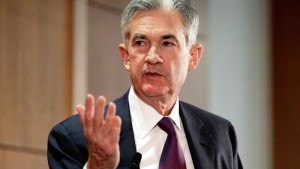The Federal Reserve finds itself in an unusually delicate spot as it considers how much more to try to stimulate an economy that’s still growing and adding jobs but also appears vulnerable.
As it considers a potential interest rate cut at its meeting next week, a string of complicated questions is clouding the Fed’s outlook.
Will a U.S. manufacturing sector that is essentially in recession weaken the rest of the economy? Will a shaky truce in the U.S.-China trade war hold? Will Britain avoid a possibly calamitous no-deal Brexit? Is Europe on the brink of a downturn? Can the Fed finally manage to lift annual inflation up to its 2 percent target?
Compounding the Fed’s difficulty is the nature of its rate cuts. They’re intended to avert a slowdown that could sink into a recession rather than revive an already-ailing economy. In such cases, it’s hard to know when rate cuts have been sufficient. Rate changes typically affect an economy only over time.
The danger is the Fed might miscalculate and either fail to cut rates enough to energize the economy or push them too low and inflate a bubble in stocks or other risky assets.
“Calibrating that is tricky,” said Julia Coronado, chief economist at MacroPolicy Perspectives. The Fed’s interest rate cuts are “not based on actual deterioration” but “on the potential for deterioration if you don’t act.”
The question of whether to cut rates comes against an economic backdrop in which inflation and borrowing rates remain historically low even after a record-long 11 years of growth as well as low unemployment.
The Fed is facing all these challenges while also absorbing public attacks from President Donald Trump, who has regularly excoriated Chairman Jerome Powell’s leadership and the central bank’s decision not to cut rates earlier and more aggressively.
The Fed has also recently had to buy billions in Treasury bills to inject cash into short-term money markets after concluding belatedly that it had let too much funding drain from those markets and caused short-term rates to temporarily surge above its target range.
Next week, the Fed is widely expected to cut its benchmark short-term rate to a range of 1.5 percent to 1.75 percent . The goal would be to help safeguard the economy from uncertainties caused by Trump’s trade wars and from a global slowdown and to boost inflation. In speeches in the past month, Fed policymakers, including Powell, Vice Chair Richard Clarida, and New York Fed President John Williams have done little to dispel those expectations.
Still, some analysts say the Fed could end up holding off on a rate cut. The economy still appears largely healthy, with the unemployment rate at a 50-year low of 3.5 percent and a still-solid pace of consumer spending. Inflation, too, has been edging up toward the Fed’s 2 percent target.
Eric Rosengren, president of the Boston Federal Reserve, has suggested that the economy is “very close” to meeting the Fed’s dual mandate of full employment and stable prices. Rosengren dissented from the Fed’s two previous rate cuts.
“It’s not a slam dunk this close to the meeting, one way or the other,” said Diane Swonk, chief economist at consulting firm Grant Thornton.







